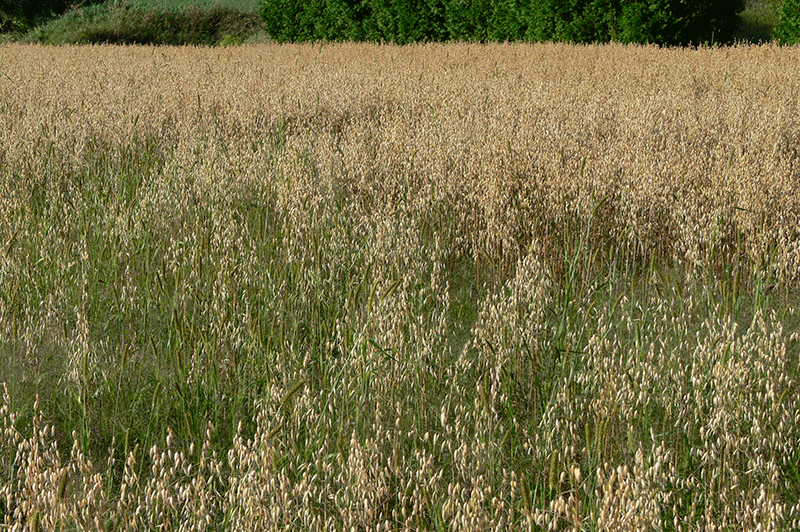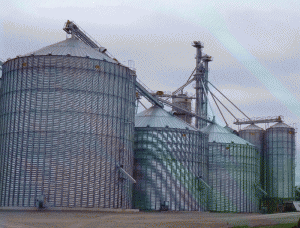Crown rust conundrum
ALTERNATE HOSTS THREATEN RESISTANCE LONGEVITY
SOME GROWERS ARE most familiar with oats as a cover crop but crown rust doesn’t discriminate — whether for pony oats, human consumption, or as cover crop, this disease can have a devastating impact on the crop. Oat breeders are faced with a new challenge as crown rust is proving a real issue to breeding advancements.

Using oats as a cover crop may increase the level of crown rust inoculum in the fall, says Albert Tenuta, field crop plant pathologist with the Ontario Ministry of Agriculture, Food, and Rural Affairs; but, as long as there aren’t alternate hosts for the disease to move to, the disease can’t survive the winter. Although crown rust is quite specific to oats, it will also infect some other grasses, such as rye and fescue, but management of European buckthorn is critical, he says.
“(Buckthorn is) a local source of spores from year-to-year, and the fact that you have this alternate host where crown rust can complete its life cycle results in different races of the fungus,” Tenuta says. “As those races change over time, they can affect variety performance.”
Varieties that had good resistance to crown rust have had that resistance breakdown in as little as one or two years, Tenuta says. Rusts are great for producing a lot of spores and they have a lot of genetic diversity potential, he says, and that’s a big part of the disease’s ability to rapidly overcome resistance.
SLOW RUSTING GENES
Tenuta says many people have high hopes that slow rusting will become predominant in oat breeding programs one day. Slow rusting genes allow diseases to infect the plant at low levels. The disease organism survives but doesn’t infect easily or progress rapidly.
Where rust could perhaps go through a life cycle in three days or two weeks normally, with slow rusting, the genetics in the plant delay sporulation for a month or even longer period. This way there’s very little economic harm done and the level of selection pressure applied to the disease to evolve is significantly reduced.
Peter Johnson, resident agronomist for RealAgriculture.com, was really hopeful breeders would get into slow rusting genes but “they just haven’t been able to get that far yet.”
“We don’t have full resistance in any varieties that I’m aware of, but we have very, very high levels of tolerance,” he says. “We had a couple of trials in Eastern Ontario last year where all the other varieties were just hammered (with crown rust) and three of the new varieties out of the Agriculture and Agri-Food Canada program had very low levels, so that’s quite exciting.”
A CAUTION ON FUNGICIDES
In performance trials last year, the Ontario Cereal Crops Committee gave both AAC Almonte and AAC Oaklin the best possible score of 0.0 for crown rust resistance. But Johnson warns that can’t last if good management practices aren’t adopted province wide.
“If you are growing an oat crop anywhere other than Northern Ontario, you must spray a fungicide on your oat crop at flag leaf stage,” he says. “Many of my best growers have really been moving toward two fungicide applications, one at growth stage 31 or 32 and one at late boot stage, just because it gives them that much better control, heavier test weights, and higher yields.”
Be smart about rotating chemistry though, he adds. A recent discovery in New York State of fusarium that’s resistant to some — but not all — triazoles, only further emphasizes the importance of rotating between fungicide groups.
Farmers who are going to use a two-pass system should ensure at least one of the products used contains dual modes of action. “A Twinline, or a Stratego, or a Quilt all give almost as good of control as a Folicur,” he says, “but now I have two modes of action, so it’s less likely we’ll see resistance develop to the fungicide.”
Because rusts are a moderate or high-risk type pathogen for developing resistance, oat growers should keep note of rust developing on a variety that they’ve grown for while, as this is the first warning sign that a resistance issue could be emerging. Planting oats as early as possible also helps plants to develop so that, if conditions for rust development become favourable (daytime temperatures between 20 and 25 degrees C and night time temperatures between 15 and 20 degrees C with good rains and dews) the crop is more advanced or past flag leaf.
ADVICE FOR NORTHERN ONTARIO
“They still don’t seem to have the new races of crown rust in the New Liskeard district,” says Peter Johnson, agronomist with RealAgriculture.com. “How that hasn’t happened astounds me, but it hasn’t.”
Growers farming where crown rust is less of an issue may be more interested in some advice from Bill May, a crop management agronomist for Agriculture and Agri-Food Canada in Saskatchewan, who previously grew oats in Ontario. Like Northern Ontario, crown rust pressure in Saskatchewan and Manitoba varies from moderate to non-existent compared to what he’s used to. While conducting trials on crown rust management out west, he’s found the success of fungicides is very dependent on the variety.
“For a cultivar which is susceptible to every oat disease known to mankind, it didn’t matter what the disease pressure looked like, a fungicide was very beneficial,” he says. “If you have a cultivar with good crown rust resistance, there was no benefit to a fungicide application, even when the crown rust pressure was high.”
May notes that in his area, upon the discovery of a crown rust problem, the presence of alternate hosts can very often be identified as the source of the problem. •








